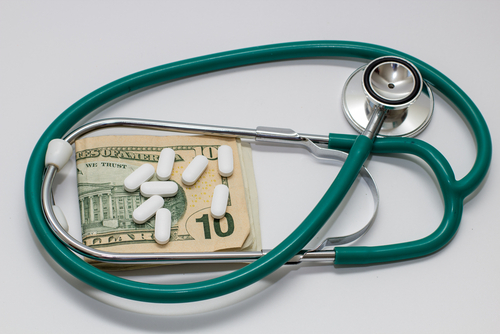Gene Therapy Wins Over Prophylaxis in Cost-Benefit Analysis as Long-term Treatment for Severe Hemophilia A

A gene therapy that can treat patients with severe hemophilia A is likely to be more cost-effective over the long term than reliance on prophylactic (preventive) therapy using factor VII (FVIII), a model-based analysis of the two treatment approaches reports.
The study, “Gene therapy in hemophilia A: a cost-effectiveness analysis,” was published in the journal Blood Advances.
Recent advances in gene therapy for hemophilia A are opening the possibility of a curative treatment in a not-too-distant future. While not yet clinically available, debate is already underway regarding the costs versus benefits of this potential treatment, as it is expected to carry a high pricetag.
To assess the cost-effectiveness of gene therapy, it is important to take into account the natural history of the disease and the current cost of treatment.
FVIII prophylaxis treatment, the current standard of care and highly effective in preventing joint damage and disability, is among the costliest for a single disease, the study notes. It costs more than a $140,000 a year to treat a patient without complications (hepatitis C virus or the development of inhibitors — antibodies that prevent the clotting factor from working to prevent bleeds). But 30% of these people develop inhibitors — a complication associated with costs of more than $1 million a year if aggressive treatment is needed.
A Phase 1/2 clinical trial has shown that gene therapy is effective, and the researchers here note that results showed it can sustain FVIII production for more than two years, which is associated with significant reduction in bleeds and no inhibitor formation.
They decided to look at data and determine the cost-effectiveness of a gene therapy to treat severe hemophilia A compared to standard prophylactic use.
Researchers at the University of Pittsburgh developed a mathematical model called the Markov state–transition model to estimate the costs-effectiveness of treatment approaches for severe hemophilia A from a United States healthcare system perspective.
Results looking at costs largely indicated that treatment with gene therapy for this patient group is likely favorable. Specifically, using this model, they determined that over a 10-year period, gene therapy will cost $1 million per person compared to $1.7 million for prophylaxis.
For effectiveness or benefits, the researchers used QALY — or quality-adjusted life year — as their measure.
Gene therapy in severe hemophilia A was associated with a gain of 8.33 QALYs compared to 6.62 QALYs for prophylaxis, they reported — suggesting based on these models that gene therapy would be significantly more cost-effective than prophylaxis over the long term.
But results were sensitive to variations in a gene therapy’s cost, with this treatment approach not being a cost-savings if its initial pricetag is more than $1.6 million. This upper limit, however, might change if the therapy’s effectiveness stretched out longer than 10 years — a limit chosen because animal models of severe hemophilia A, given gene therapies, suggest this is reasonable, the study noted.
Researchers also conducted a sensitivity analysis to determine any variation in their finding that gene therapy was cost-effective relative to prophylaxis. This analysis varied all parameters 3,000 times over parameter distributions. Gene therapy was found to be the better option in 92% of all scenarios reviewed.
“Our model shows that gene therapy for the treatment of severe hemophilia A is likely to be cost saving or cost-effective compared with prophylaxis with FVIII. Gene therapy maintained superior cost-effectiveness, even in the setting of high upfront costs,” the authors concluded.






